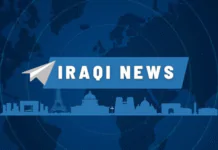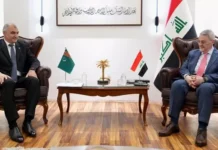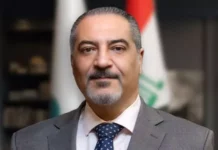Good Afternoon ,
TOKENIZED US TREASURY BILLS ON XRP LEDGER
“Tokenization platform OpenEden has announced that it will bring tokenized US Treasury bills (T-bills), a short-term US government debt obligation backed by the US Department of the Treasury, to the XRP Ledger (XRPL) and its users for the first time.”
“The tokenization of T-bills onto the XRPL is a demonstration of how institutional access to decentralized finance (DeFi) is being driven by the tokenization of traditional real-world assets (RWAs).
The assets backing OpenEden’s TBILL tokens are invested in short-dated US T-bills and reverse repurchase agreements collateralized by US Treasuries. Minters are subject to stringent KYC and AML screening to ensure the highest security and regulatory compliance standards.”
“Markus Infanger, Senior Vice President, RippleX. “Institutions are increasingly looking at where to tokenize their real-world assets and the arrival of T-bills on the XRPL powered by OpenEden reinforces the decentralized Layer 1 blockchain as one of the leading blockchains for real-world asset tokenization.”
““Bringing tokenized T-bills to the XRP Ledger is the next step in our exciting journey. Purchasers will be able to mint our TBILL tokens via STABLECOINS, including Ripple USD (RLUSD) when it launches later this year.”
@ Newshounds News™
Read more: Ripple
~~~~~~~~~
USDC TRADING VOLUME SOARS 48% in July, driven by MiCA
“Circle’s stablecoin trading volume spiked in July thanks to a surge in market inflows and new European (MICA) rules for digital assets.
According to a July 31 report by CCData, the trading volume for USD Coin pairs on centralized exchanges reached $135 billion as of July 25, while its market capitalization rose 5.4% to $33.6 billion.”
“With the implementation of the European Union’s Markets in Crypto-Assets (MiCA) regulatory framework, Circle became the first stablecoin issuer to be approved by regulators in the region on July 1.”
“According to DefiLlama, USDT retains the largest market share of any stablecoin at nearly 70%. In addition, on July 31, Tether reported record profits of $5.2 billion in the first half of 2024.”
“Several crypto exchanges in Europe delisted stablecoins ahead of the implementation of new rules on June 30.”
@ Newshounds News™
Read more: Coin Telegraph
~~~~~~~~~
“In a July 2024 CBDC report, it is documented that Russia’s CBDC pilot program has been successful and will extend the number of participants from 34 to 1200 banks/merchants in the second half of 2024.”
There’s only 396 operating banks in Russia meaning that the 1200 participants that the CBDC will extend to EVERY BANK IN RUSSIA.
“Therefore, Russia is conveniently passing legislation to allow “international cross border cryptocurrencies” right before they ramp up CBDC usage in 2024”
@ Newshounds News™
Read more: https://x.com/SMQKEDQG/status/1818676859527184787
~~~~~~~~~
Russia’s top senator announces progress on BRICS digital payment system
Amid endless sanctions and Russia’s disconnection from SWIFT, the Bank of Russia has developed its own payment system, which many countries have already joined, Valentina Matviyenko noted
MOSCOW, August 1. /TASS/. Plans to create a BRICS digital payment platform are moving steadily forward, Russia’s Federation Council Speaker Valentina Matviyenko told a press conference.
“The creation of the independent financial payment platform BRICS Bridge, a standalone mutual payment system on a firm joint platform, is now being discussed within BRICS. I have spoken both with the Central Bank and the Finance Ministry, things are moving along nicely,” she said.
“It is being discussed with colleagues from central banks, finance ministries of all BRICS countries, including new members,” Matviyenko said, adding that Russia, as the BRICS chair, is in charge of all this.
“If it works it will be a bombshell globally, in the best sense,” the upper chamber head noted. She expressed hope that this issue would be considered at the summit of BRICS heads of states in Kazan in October.
“Perhaps it will be approved then, or at least the discussions will lead to a decision on when and in which format it should be finalized, meaning this is no longer just an idea, it is moving forward in practice,” she stressed.
Amid endless sanctions and Russia’s disconnection from SWIFT, the Bank of Russia has developed its own payment system, which many countries have already joined, Matviyenko noted. “This shows that there is a light at the end of every tunnel,” she added.
The Federation Council Speaker pointed out that the dollar is becoming weaker globally amid an overflowing US national debt, while the system of mutual settlements in national currencies is expanding.
“I hope that the system that has been created by BRICS, will become a trend, an example that not only BRICS nations, but many other countries as well will join later,” she said, adding that the issue is being discussed by the Shanghai Cooperation Organization (SCO) as well.
@ Newshounds News™
Read more: TASS
~~~~~~~~~
MF’S GLOBAL RESERVE ASSET- SDR’S- PAY ATTENTION TO THIS ONE
“Congratulations to members, staff, and leadership on the 80th anniversary of the IMF’s foundation at Bretton Woods, New Hampshire.
The Fund is the crown jewel of the post–World War II international architecture. It was designed by idealists determined to construct a set of institutions to deter aggression among the major powers and prevent resumption of the interwar economic and financial unilateralism.”
“The IMF’s principal purpose, according to its Articles of Agreement, is to promote international monetary cooperation by providing “the machinery for consultation and collaboration on international monetary problems.” In the turbulent period following the end of US dollar convertibility to gold in August 1971, members demonstrated that principle and quickly completed the Smithsonian Agreement by December.
The agreement’s new par values for fixing currencies to the US dollar did not hold, though, and within two years, the Bretton Woods exchange rate regime dissolved into a system of managed floating exchange rates.”
“The most enticing opportunity is the IMF’s global reserve asset, SPECIAL DRAWING RIGHTS (SDRs).”
“More than 50 years ago, members approved the first amendment to the Articles of Agreement authorizing the IMF to allocate special drawing rights. The negotiations lasted the better part of the 1960s. “
“SDRs are allocated in proportion to IMF members’ quotas. Each member receives an interest-bearing reserve asset and corresponding long-term liability on which it pays the same rate. The SDR’s value is based on a BASKET OF CURRENCIES with weights adjusted periodically by the IMF board.
Its interest rate is a weighted average of the short-term government interest rates for the constituent currencies.An SDR allocation adds to a member’s unconditional liquidity.
Unlike unconditional liquidity derived from borrowing or current account surpluses, the liquidity is costless until the SDRs are transferred to another holder.”
“The initial allocation of SDRs annually over a three-year period starting in 1969 proved to be too little too late to save the Bretton Woods exchange rate regime, but nevertheless it was a pathbreaking and historic example of international monetary cooperation.
The second amendment to the articles, in 1978, not only preserved the IMF’s authority to allocate SDRs but also established a two-part obligation for members to collaborate on “better international surveillance of international liquidity” and “making the special drawing right the PRINCIPAL RESERVE ASSET of the international monetary system.”
“SDRs are not a magic bullet that alone will solve today’s pressing global economic and financial challenges, but they are one of many instruments that can contribute.”
@ Newshounds News™
Read more: IMF
~~~~~~~~~
Newshound’s Daily Breakdown Podcast Link
Newshound’s News Telegram Room Link
Q & A Classroom Link
Follow the Roadmap
Follow the Timeline
Seeds of Wisdom Team™ Website
Subscribe to Newsletter






